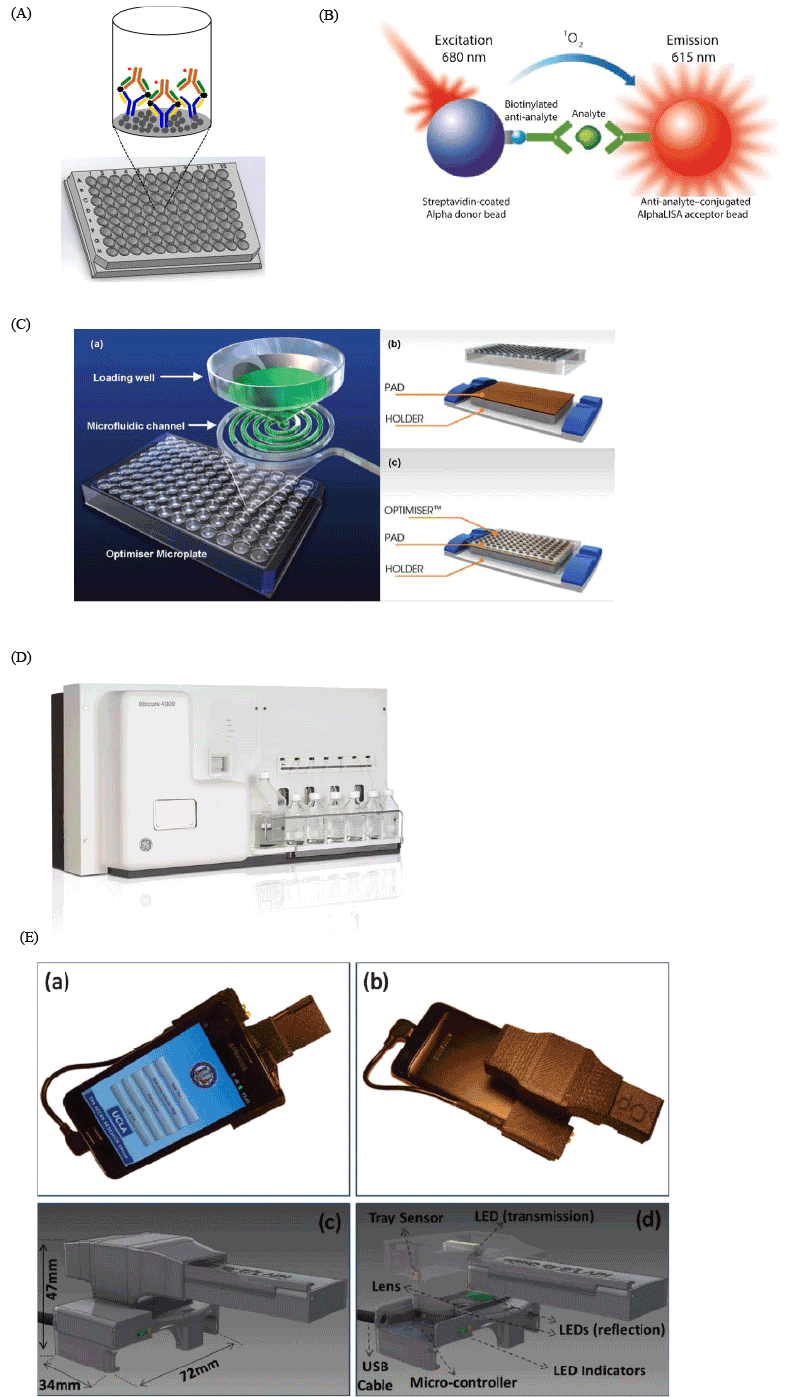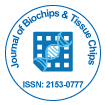Make the best use of Scientific Research and information from our 700+ peer reviewed, Open Access Journals that operates with the help of 50,000+ Editorial Board Members and esteemed reviewers and 1000+ Scientific associations in Medical, Clinical, Pharmaceutical, Engineering, Technology and Management Fields.
Meet Inspiring Speakers and Experts at our 3000+ Global Conferenceseries Events with over 600+ Conferences, 1200+ Symposiums and 1200+ Workshops on Medical, Pharma, Engineering, Science, Technology and Business
Opinion Article Open Access
Immunodiagnostics: Major Advances and Future Insights
| Sandeep Kumar Vashist* | |
| Laboratory for MEMS Applications, IMTEK–Department of Microsystems Engineering, University of Freiburg, Germany | |
| Corresponding Author : | Sandeep Kumar Vashist Laboratory for MEMS Applications IMTEK–Department of Microsystems Engineering University of Freiburg, Georges-Koehler-Allee 103 79110 Freiburg, Germany Tel: +49-761-2037252 Fax: +49-761-20373299 E-mail: sandeep.kumar.vashist@hsg-imit.de |
| Received November 08, 2013; Accepted November 09, 2013; Published November 15, 2013 | |
| Citation: Vashist SK (2013) Immunodiagnostics: Major Advances and Future Insights. J Biochips Tiss Chips 3:105. doi:10.4172/2153-0777.1000105 | |
| Copyright: © 2013 Vashist SK. This is an open-access article distributed under the terms of the Creative Commons Attribution License, which permits unrestricted use, distribution, and reproduction in any medium, provided the original author and source are credited. | |
Visit for more related articles at Journal of Bioengineering and Bioelectronics
| There have been tremendous advances in immunodiagnostics during the last five decades, which have led to the emergence of potential diagnostic technologies, new immunoassay formats and diagnostic platforms. The radioimmunoassay and Enzyme Linked Immunosorbent Assay (ELISA) were the predominant techniques during the initial era of immunodiagnostics. The strenuous research efforts by researchers during the last three decades have enabled the development of potential antibodies for a wide range of analytes. Till date ELISA has been the gold standard of clinical immunodiagnostics, which has also been used very frequently for industrial analysis, environmental monitoring, food analysis and bioanalytical sciences. Despite the numerous advances in the field, it is difficult for any other technique to achieve the same high sensitivity, specificity, precision and throughput as ELISA. Various robotic work stations have been devised to perform automated ELISAs in high volume settings, such as in hospitals and industry. Similarly, the Microtiter Plate (MTP) readers have been improved significantly in terms of optics, technology and data analysis. In addition to conventional 96-well MTP format, various high throughput formats, such as 384 and 1536 wells, have also been devised for specific needs. The last two decades have seen considerable improvements in antibody immobilization strategies [1-3], which have significantly improved the analytical performance of ELISA in terms of higher sensitivity, greater detection range, lower limit of detection and reduced assay duration [4-6]. Similarly, the sample preparation strategies and screening of immunological components have also been critically improved, which enables highly reproducible immunoassays [7,8]. The development of highly sensitive enzyme substrates have led to ultrasensitive ELISAs and chemiluminescent immunoassays [9], while the use of superior fluorescent dyes improved the fluorescent immunoassays. Additionally, the use of infra-red dyes, quantum dots, gold nanoparticles, beads, and other nanomaterial/nanocomposites enabled the development of new ELISA formats, such as the naked-eye ELISA that was demonstrated using gold nanoparticles [10]. |
| The development of bead-based AlphaLISA by Perkin Elmer [11] is another major development in immunodiagnostics as it has critically reduced the immunoassay duration and complexity. It employs a streptavidin-coated Alpha donor bead and anti-analyte-conjugated AlphaLISA acceptor bead, which come into close proximity to generate the signal in the presence of analyte. These chemiluminescent immunoassays do not employ any washing step and have high sensitivity, greater dynamic range and superior analytical perfromance than the conventional ELISA. |
| The continuous developments in microfluidic technologies have critically reduced the assay duration and number of process steps apart from enabling the automated handling of process steps. The emergence of surface plasmon resonance (SPR)-based real-time and label-free immunoassays using the Biacore systems [12-14] by GE Healthcare (previously Pharmacia Biosensor AB, Biacore AB Corporation) has been a breakthrough in immunodiagnostics. These systems have become the eyes of researchers, analysts and scientists in diverse bioanalytical settings to understand the complex biomolecular interactions and develop real-time immunoassays of a few minutes duration for a large number of analytes. A wide range of SPR chips, based on various antibody immobilization strategies, have been developed for diverse bioanalytical applications. These systems have been widely adopted by the industrial, healthcare and academic settings based on their tremendous utility, high throughput, automation, continuous monitoring, and enriched information about biomolecular interactions. |
| The advantages of using microfluidics is evident to the scientific community, which have led to the development of microfluidic chips and rapid immunoassays with much lesser requirements for reagents. The conversion of conventional 96-well MTP into microfluidic MTP by Siloam Biosciences, USA [15], is another breakthrough in immunodiagnostics. It has drastically reduced the immunoassay duration from hours to minutes. Moreover, it enables many-fold reduction in reagent costs by using minimal amount of reagents, and has significantly reduced the number of steps in comparison to conventional ELISA. Similarly, various ultrasensitive microfluidic ELISA formats have also been demonstrated recently by other researchers [10,16-19]. These developments have enabled the researchers to proceed towards lab-on-a-chip technologies, which will be the main area of immunodiagnostics research in the near future. |
| There have also been some major advances in Lateral Flow Immunoassays (LFIA), which have been developed for a large number of analytes. Researchers have started looking into the development of quantitative LFIA instead of the conventional qualitative ones. Several prospective semi-quantitative LFIA formats have already been demonstarted [20]. Similarly, electrochemical immunoassays have been demonstrated for a wide range of analytes [21,22]. The multiplexed immunoassays holds tremendous potential for immunodiagnostics. The development of multiplex bead-based luminex® assays by Life Technologies Corporation is a prospective development in immunodiagnostics [23]. |
| Moreover, various signal enhancement strategies have also been developed during the last decade using nanomaterials, nanocomposites, dendrimers, polymers and nanostructured substrates. They have led to ultrasensitive immunoassays with lower limit of detection and superior analytical performance [24]. However, these formats need to comply with the stringent technology requirements [25,26], which is quite challenging at the moment due to the absence of international regulatory guidelines for nanotechnology research. Several researchers have also demonstrated paper-based immunoassays [27,28] to develop low-cost immunodiagnostics for developing nations. Moreover, the use of magnetic beads/particles in magnetic immunoassays have led to truly remarkable applications that takes into account the convenience of handling the magnetic beads/particles [29] (Figure 1). |
| Despite the tremendous advances, there is a critical need for rapid and cost-effective immunoassay procedures and novel diagnostic platforms in order to increase the outreach of immunodiagnostics to the remote settings and developing countries. The most prospective development in this regard is the use of smartphones for immunodiagnostics [30]. Various smartphone-based immunoassays [20,31-33] and smartphone-based integrated reader for lateral flow immunoassay [20,34] have already been developed during the last few years. The current generation of smartphones are equipped with high resolution camera, advanced processor, GPRS, connectivity and iCloud computing, which make them the ideal next-generation devices for point-of-care immunodiagnostics, telemedicine and mobile healthcare. Taking into account ~6.8 billion cellphone users worldwide , there will be a huge market for smartphone-based immunodiagnostics. Moreover, it will lead to tremendous cost-savings due to automated data analysis, highly centralized operations, telemedicine and personalized healthcare. The integration of smartphones with cheap paper-based immunoassayswill be highly useful in developing low-cost immunodiagnostics for the developing world. |
| References |
|
Figures at a glance
 |
| Figure 1 |
Post your comment
Relevant Topics
Recommended Journals
Article Tools
Article Usage
- Total views: 19015
- [From(publication date):
December-2013 - Dec 20, 2025] - Breakdown by view type
- HTML page views : 13835
- PDF downloads : 5180
